Hello..!!
My Dear Friends
This is @ns-porosh from Bangladesh 🇧🇩

Introduction
How are you all? I hope you are well by the grace of God.I am well with your prayers and mercy God's grace.At first of all thank you to the sir @yohan2on. Your lesson provides a lot of information on homework tasks.Anyway let's get started now......
1.-Who are Super Representatives, SR partners, and SR candidates? (The Governance of the TRON Ecosystem)
The TRON ecosystem is a simple decentralized blockchain that was originally created for centralized apps and entertainment content creators. This blockchain allows developers to create DApps, smart contracts and tokens used in blockchain. The TRON ecosystem allows creative content to be marketed and sold directly to consumers, and allows developers to make money without any interaction, eliminating the need for intermediaries to connect directly with the customer. -Used for sale.
Tron uses blockchain delegated proof-of-stack essentially as the blockchain's unanimous algorithm. This process is evidence of partnership. Several representatives are selected to create blocks in this ecosystem. This elected representative is usually called the Super Representative (SR).
Super Representative (SR)
Super-representatives are users whose purpose is to create blocks, to provide rewards from block votes and to verify transactions and to make relevant profits. In a word, they are given the responsibility of creating blocks in the network. These users have been selected through a selection process by token holders in the network. Any account of the TRON network can vote for the Super Representative Representative candidate and the vote of the Super Representatives is done every six hours. By voting i.e. those who get 1 - 27th according to the highest number of votes are Super Representative and the candidates who get votes according to the remaining 28 - 127 numbers are Super Partners. Originally super representatives worked as block producers on the Tron blockchain network. There are also two super representatives in the Tron blockchain network who are rewarded for their various activities.
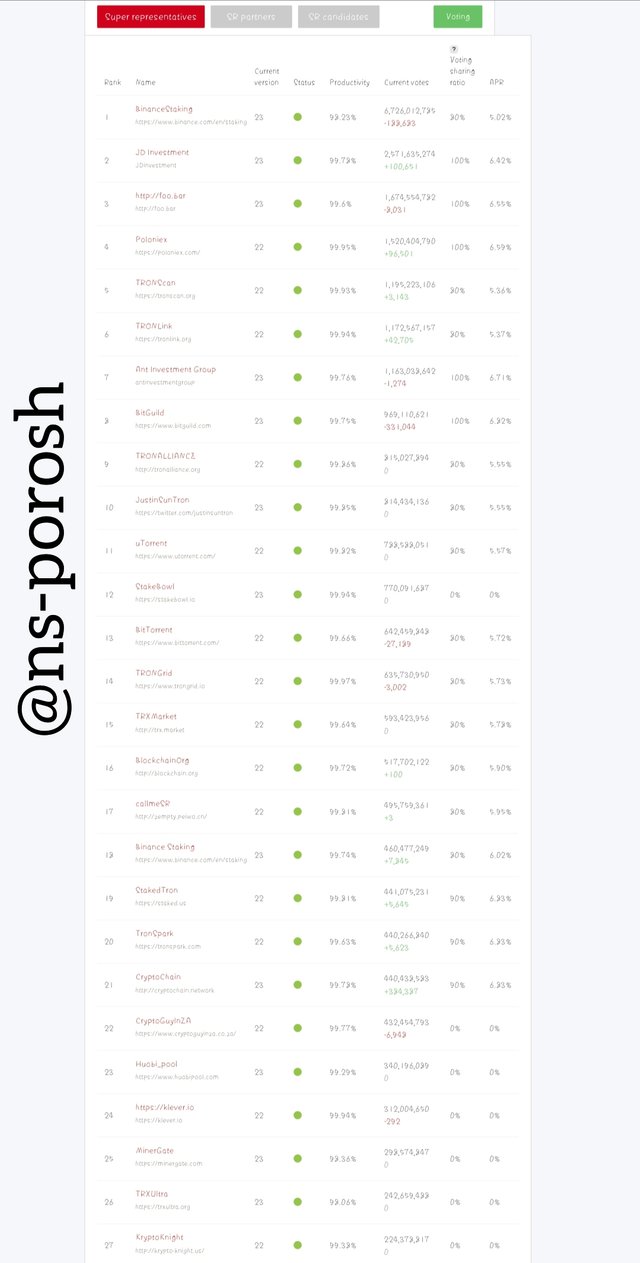
Source link
The time to create each block is three seconds. That means 20 new blocks are created in 1 minute. Super Representatives are rewarded with 32 TRX for verifying a block. It is estimated that the Super Representatives earn about 336,384,000 TRX a year.
Super Representative Partners
Just as the super-representative has a role to play in the tron ecosystem, so does the partner in the super-representative. We already know that those in positions 1 to 27 are super representatives. After 27 the remaining 100 are automatically selected as SR partners i.e. 28 to 127 candidates are selected as SR partners in Tron Network.
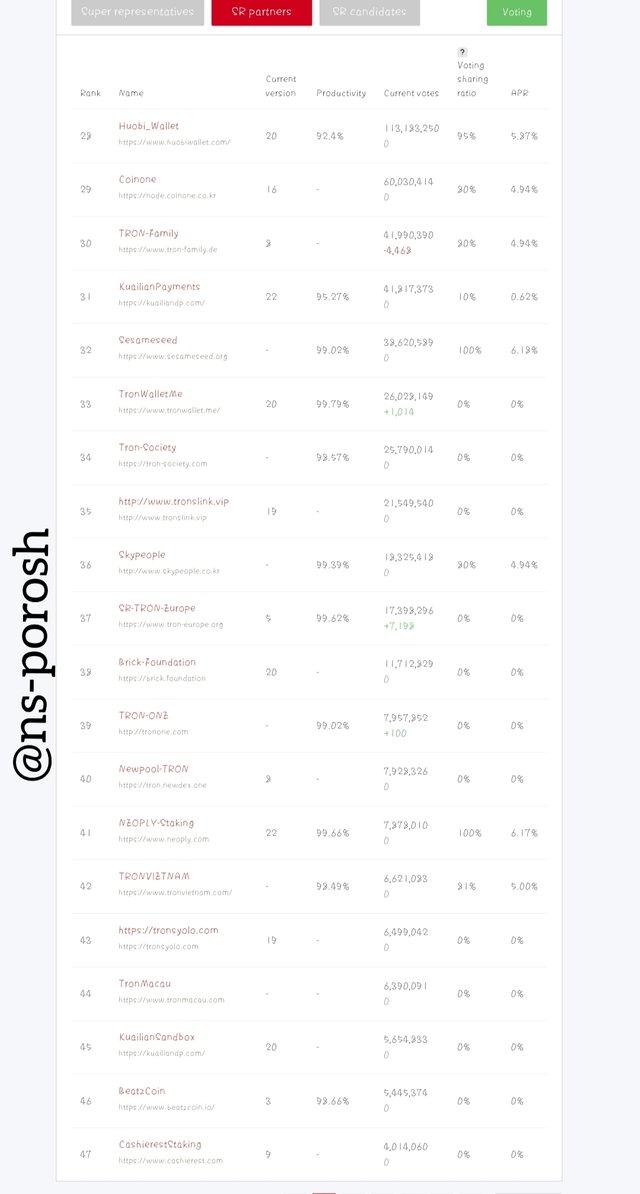
Source link
Limited to the role of partner in the Super Representative. They cannot participate in block production as well as in packing network transactions and do not have a block validation function but receive rewards for the votes received and for the newly produced blocks. Partners in the Super Representative also form a kind of council to participate in the voting activities of the ecosystem and to monitor the integrity and well-being of the TRON network.
While SR Partners do not have the same benefits as Super Representatives, they play an important role in approving or rejecting improvements proposed by 27 Super Representatives.
Super Representatives Candidates
The position of Super Representative candidates is 128-147th. The Super Representative candidates did not get enough votes to be part of the SR partners. If they got enough votes they could be part of the Super Representative.
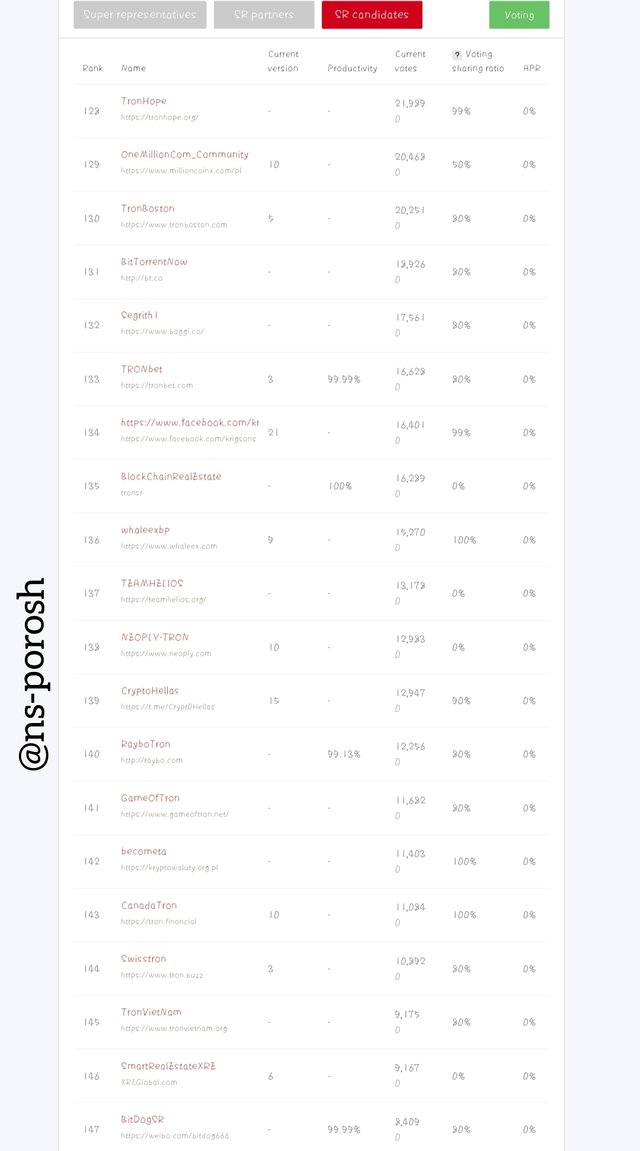
Candidates from 128 - 147 receive much lower rewards for block production. However, voting is usually held every 8 hours. According to the vote, first the Super Representative, then the Super Representative Partner and the Super Representative candidate are elected. Tron token holders who are Super Representative candidates can automatically step up to the Super Representative or Super Representative Partner by voting. SR candidates are also expected to vote on various proposals for changes to the TRON network.

2.-What’s the difference between DPOS and POS consensus mechanisms?
PoS (Proof of Stake)
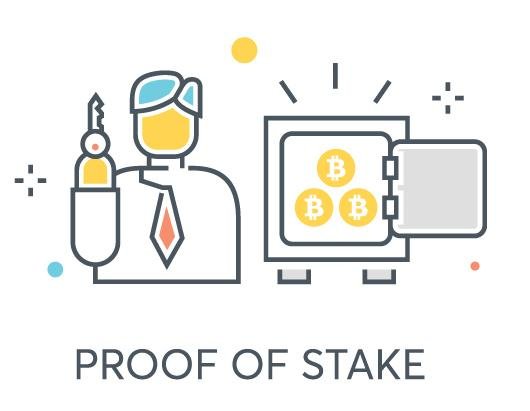
Proof-of-stake (PoS) is a kind of consensus algorithm to improve certain errors and consume relatively less energy was created for the purpose. PoS is primarily employed by the Ethereum network among others. In this mechanism, users allocate a percentage of their assets to the selected node. And allows for much more contributions. PoS makes the blockchain much more scalable and allows it to increase security considerably. As well as the validity of transactions, the implementation of new protocols and the creation of blocks. PoS uses a random sorting method. In this method the nodes will create blocks and verify whether the transactions are valid. Nodes are verifiers. When a new block is ready for processing the transaction, the verifier will then verify the transaction in the block. Verifiers are rewarded for verifying transactions. PoS is environmentally friendly and does not require as much energy as the PoW Consensus process because the PoS verification process is very simple and very fast. Also this protocol is much more secure.
Lastly, in the proof of the Stake Consensus Algorithm, miners get the ability to dig and validate their established transactions on the stacked coins. That means users get a percentage of authority according to their ability to grab coins. For example: If a miner occupies 20% of all tokens, he will be eligible to mine 20% of the block.
- Examples
The following blockchains using proof-of-stack algorithms:-
- EOSIO, Polkadot, Cardano etc.
DPoS (Delegated Proof of Stake)
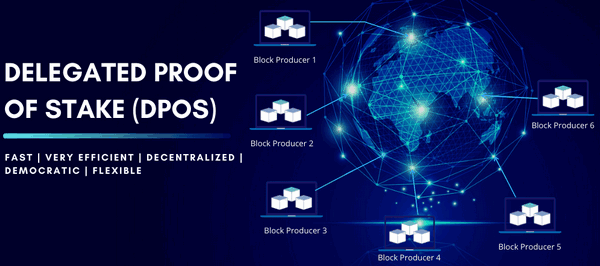
Delegated Proof of Stake is an updated version of Proof of Stake and both work the same. The Stake Delegate Proof was invented in 2014 by Daniel Larimer with the aim of making wealth holders voters and currency makers. Through this system, stockholders will be able to vote and their voting power is determined by asset holding i.e. the voting power is equal to the currency of each user. Usually the legitimacy or representative is chosen by a vote of users who will legitimize the next block of the ecosystem. Users put more money on the network to increase their position in the community and share their holdings with delegates. These elected representatives receive rewards from transaction fees. This system has a certain number of verifiers to verify transactions on the blockchain network. As a result, this process of transaction verification works much faster than PoW and other sensing reduction systems.
Examples
STEEM,Tron,EOS etc.
DIFFERENCES BETWEEN POS AND DPOS
proof of stake:
In a proof-of-stake network, all nodes are randomly selected and the nodes are selected by the number of resources stored in the system. Since all nodes in the network are selected at random, it is a decentralized consensus protocol.
The more a person grabs a token in this system, the more likely he is to be a verifier. For this the verifiers compete among themselves.
PoS is less measurable because the validation process is very slow. However, all currency holders can participate in the validation process.
This system is environmentally friendly and does not require any hardware to prove the work.
System rewards are only for those who share tokens.
Delegated proof of stake:
- Evidence of a stake system is a kind of centralized system because the decision-making power of the network is vested in a few representatives.
- In the DPOS system the verifiers work together without any competition for their work. Choosing a verifier depends on the reputation of what you have done in your community. Only these elected representatives can verify a block.
- DPoS is basically much faster and much more scalable than PoS. The validation process is very fast.
- This system may propose blockchain changes to the network with the consent of the users. This means that users can have a kind of effect on this system if they want.
- In DPoS, users are rewarded with votes from Super Representatives. Voters receive a portion of the prize for the tokens they submit.

3:-Write a Step by Step tutorial showcasing how to stake/freeze TRX and vote for SRs
The process by which we can vote for super representatives in the stacking and tron ecosystem is discussed below with step-by-step screenshots.
How to stake/freeze TRX
We need to freeze trx tokens before we can vote for super representatives in the Tron ecosystem. Let's first see how to freeze trx tokens: -
Step-1
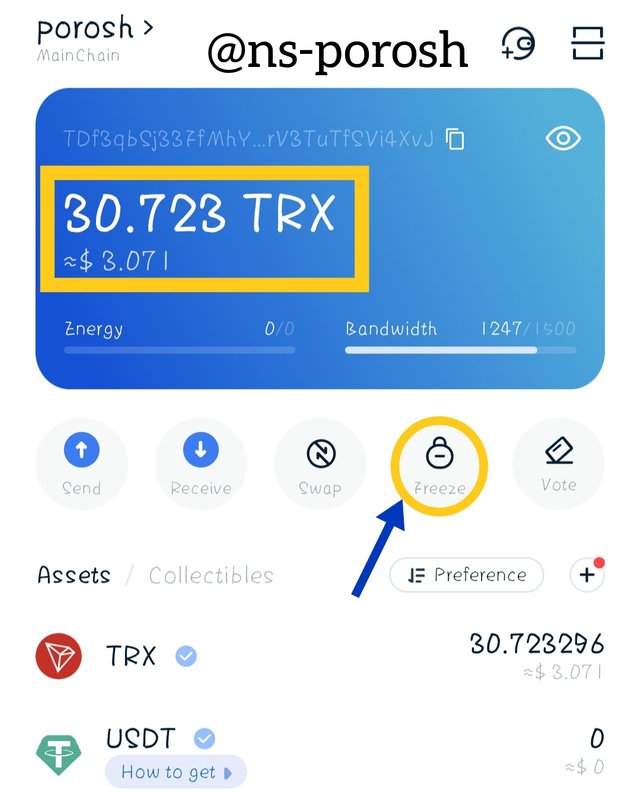
First we need to log in to the Tronlink Wallet app. Then we have to import the Tron private key. In the mountains we need to create a wallet by setting a strong password. Next we will see an icon called Fridge on the homepage of the wallet and click on the Fridge icon.
Step-2
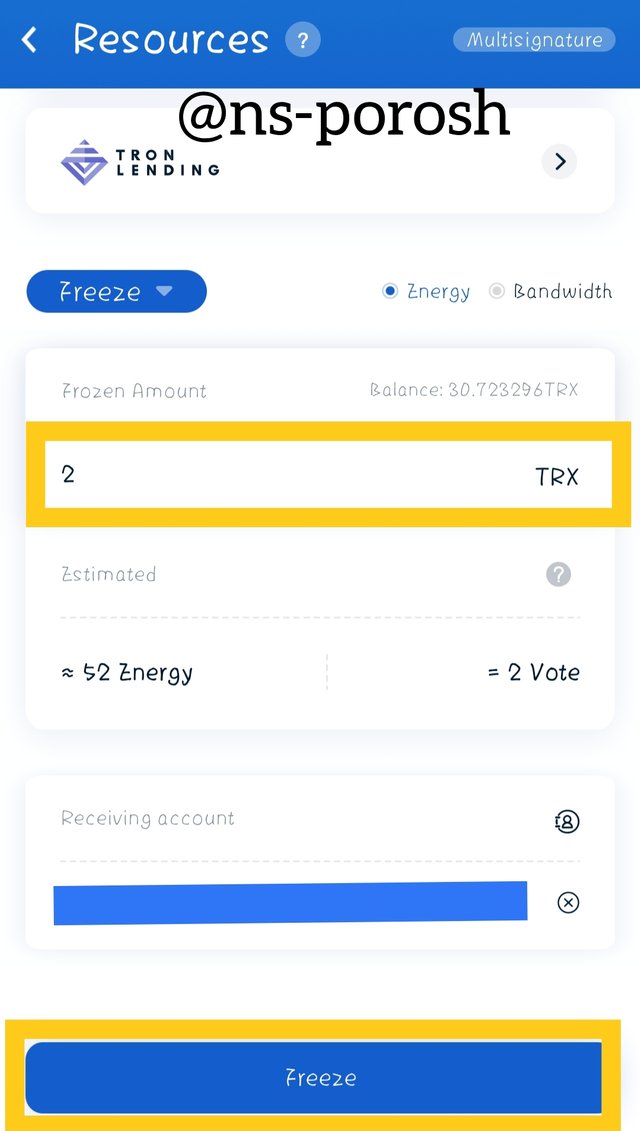
In this step we have to give the amount of TRX that we will freeze. I will freeze 2 TRX. So I selected 2 TRX. Then click on the fridge button at the bottom.
Step-3
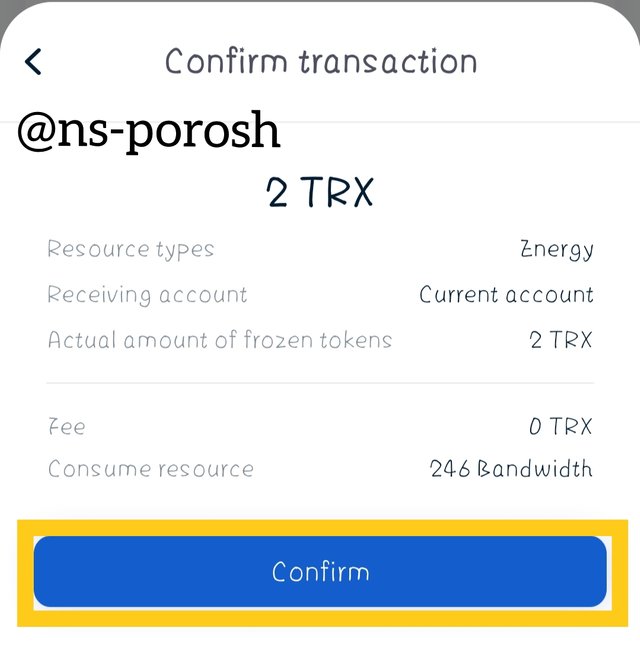
In this step we have to click on confirm button to proceed to the next step.
Step-4
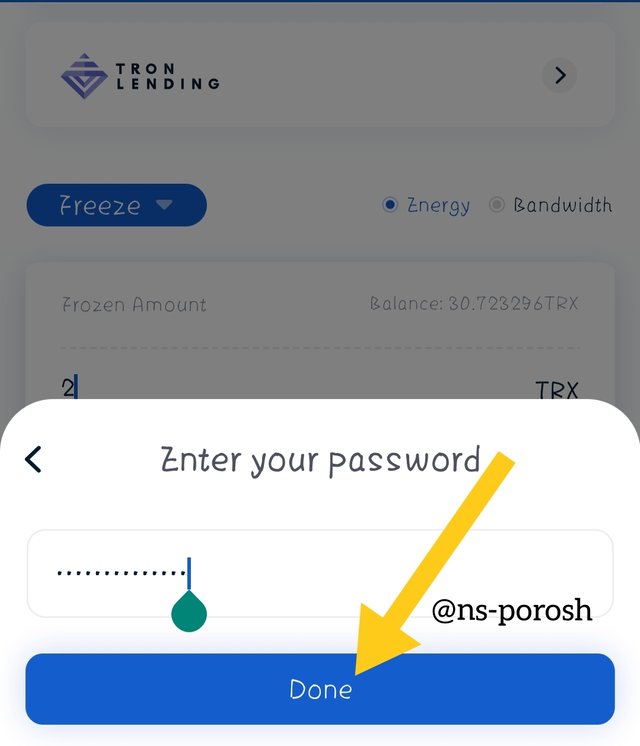
Now we will give a password. I used the password given in the TRON link. After giving the password, you have to click on the Done button. TRX will be frozen from the account as soon as it is clicked.
Step-5
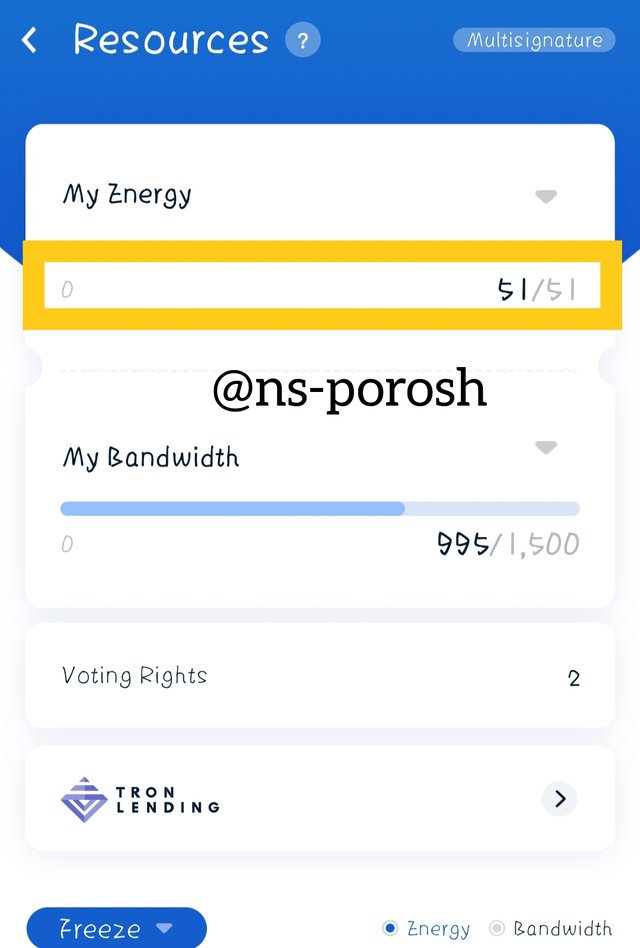
My energy can be seen in the screenshot above.

How to vote for SRs
Step-1
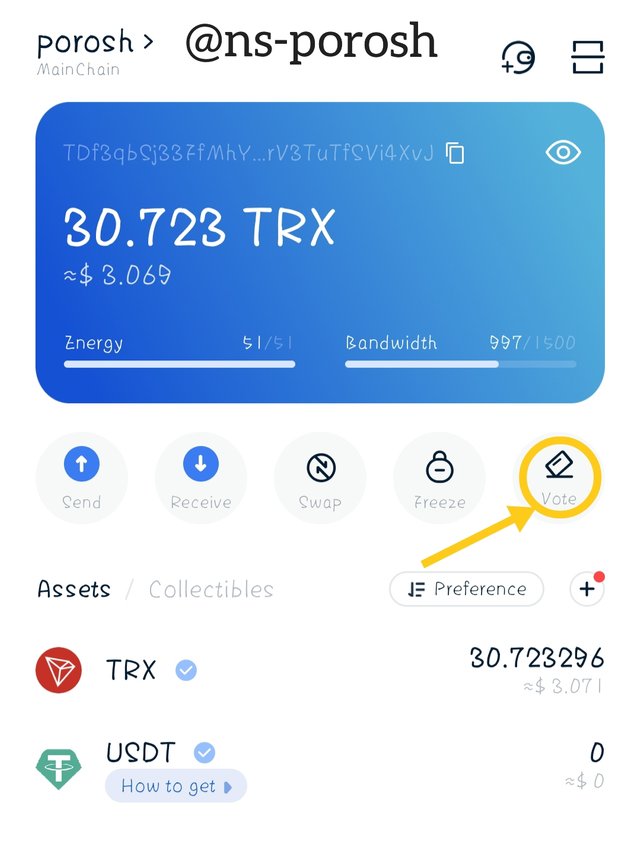
We can vote as much as we were freezing TRX. We will see the vote button on the homepage of Tronlink Wallet. We have to click on the vote button first.
Step-2
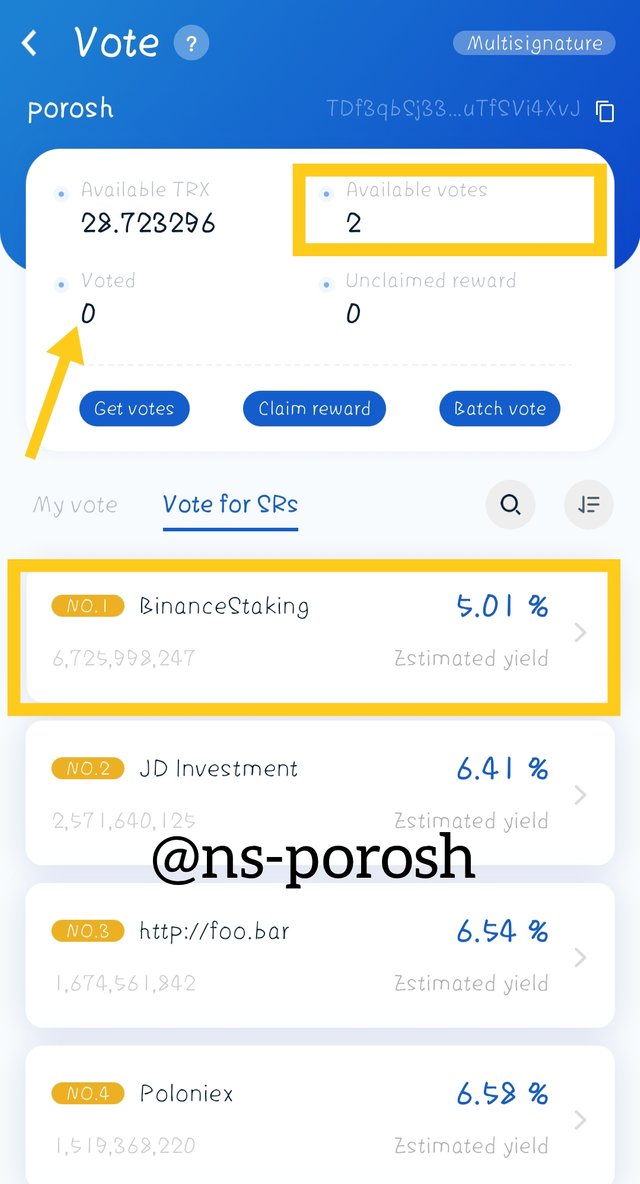
At this point we can see that I have 2 votes. This means I can cast 2 votes. I chose Binancestaking to vote.
Step-3
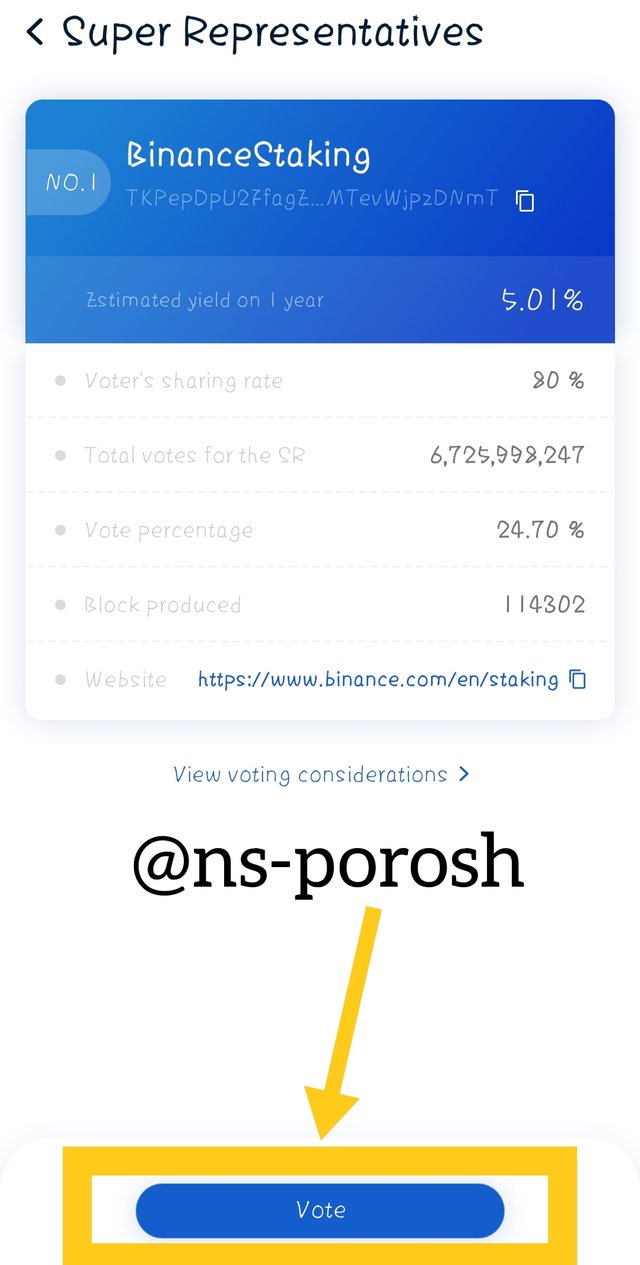
The next step is the complete specification of Binancestaking which includes voter sharing rate, total votes for SR, percentage of votes, blocks produced. To vote Binancestaking we need to click on the vote button.
Step-4
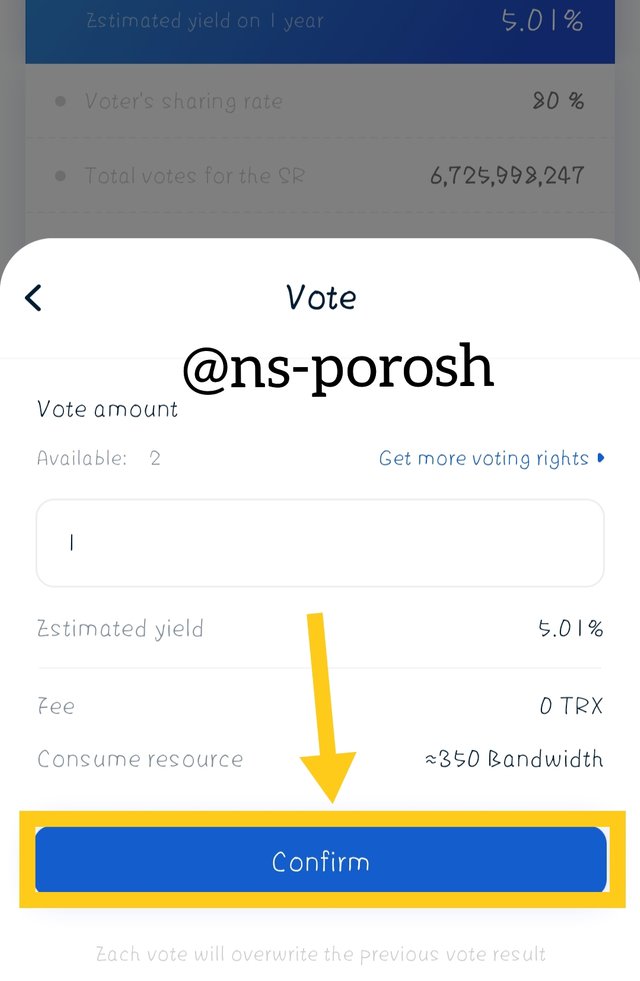
Notice that I have selected 1 vote for Binancestaking. Then we have to click on the confirm button.
Step-5
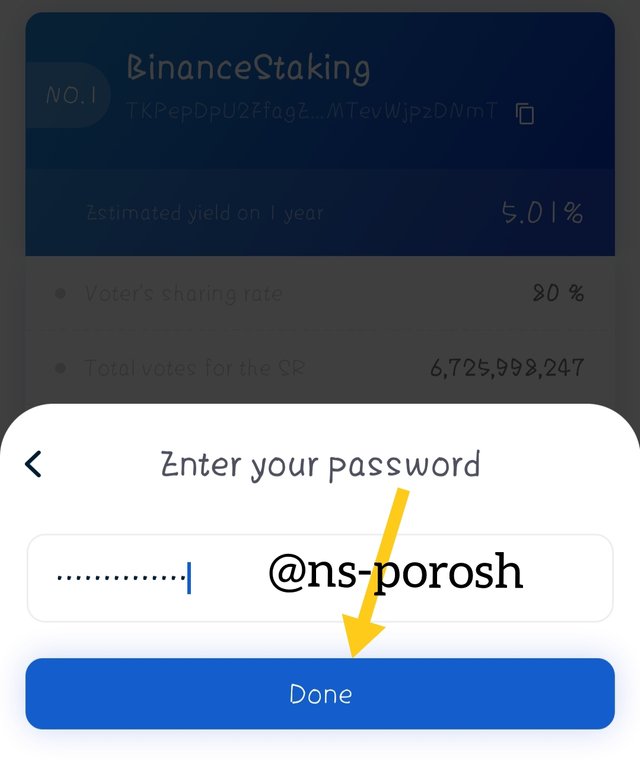
In this step we have to enter the password. After giving the password, you have to click on the Done button. By clicking the Done button, we will be able to vote.
Step-6
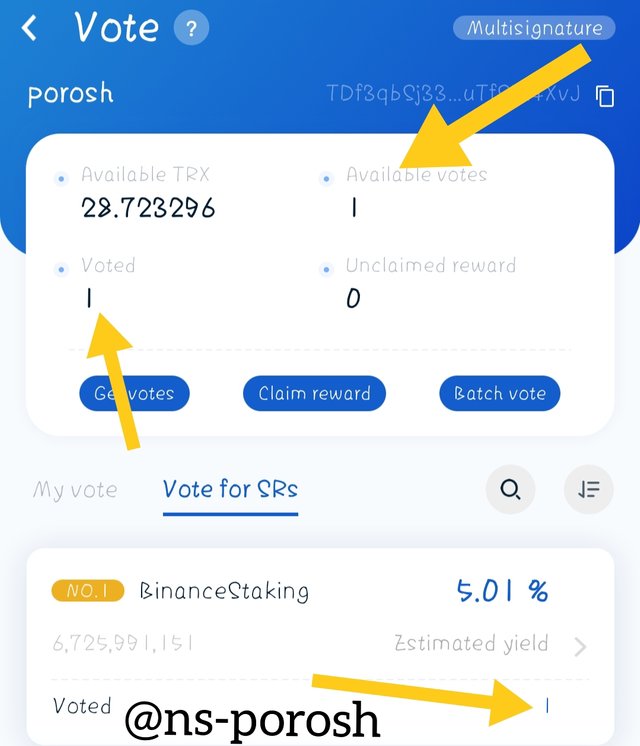
Notice in the screenshot above that I now have 1 vote. Before that I had 2 votes. This means I voted Binancestaking 1. As you vote, the number of votes will increase and the number of votes available will decrease.

Conclusion
One of the current top blockchain networks is the Tron blockchain network. The Tron ecosystem has super representatives, partners and candidates. They are elected by a proper vote. There are many roles of super representatives, partners and candidates in the blockchain network. Tron token holders regularly vote for delegates. The role of the representative is to create blocks in the tron ecosystem, to create and legitimize transactions. The Tron ecosystem also works on dedicated evidence. We can easily freeze Tron Coins using Tronlink Wallet and with those frozen Tron Coins we can easily vote for Super Representatives.
From this lecture of Sir I have gained a lot of knowledge about Tron ecosystem.Thank you very much sir @yohan2on for this beautiful lesson.


Hi @ns-porosh
Thanks for participating in the Steemit Crypto Academy
Feedback
Total| 7/10
This is good work. Thanks for taking the time to learn about the Governance of the Tron ecosystem.
Do not use the #club5050 tag on your articles if you have not powered up at least 50% of your steem rewards.
Downvoting a post can decrease pending rewards and make it less visible. Common reasons:
Submit